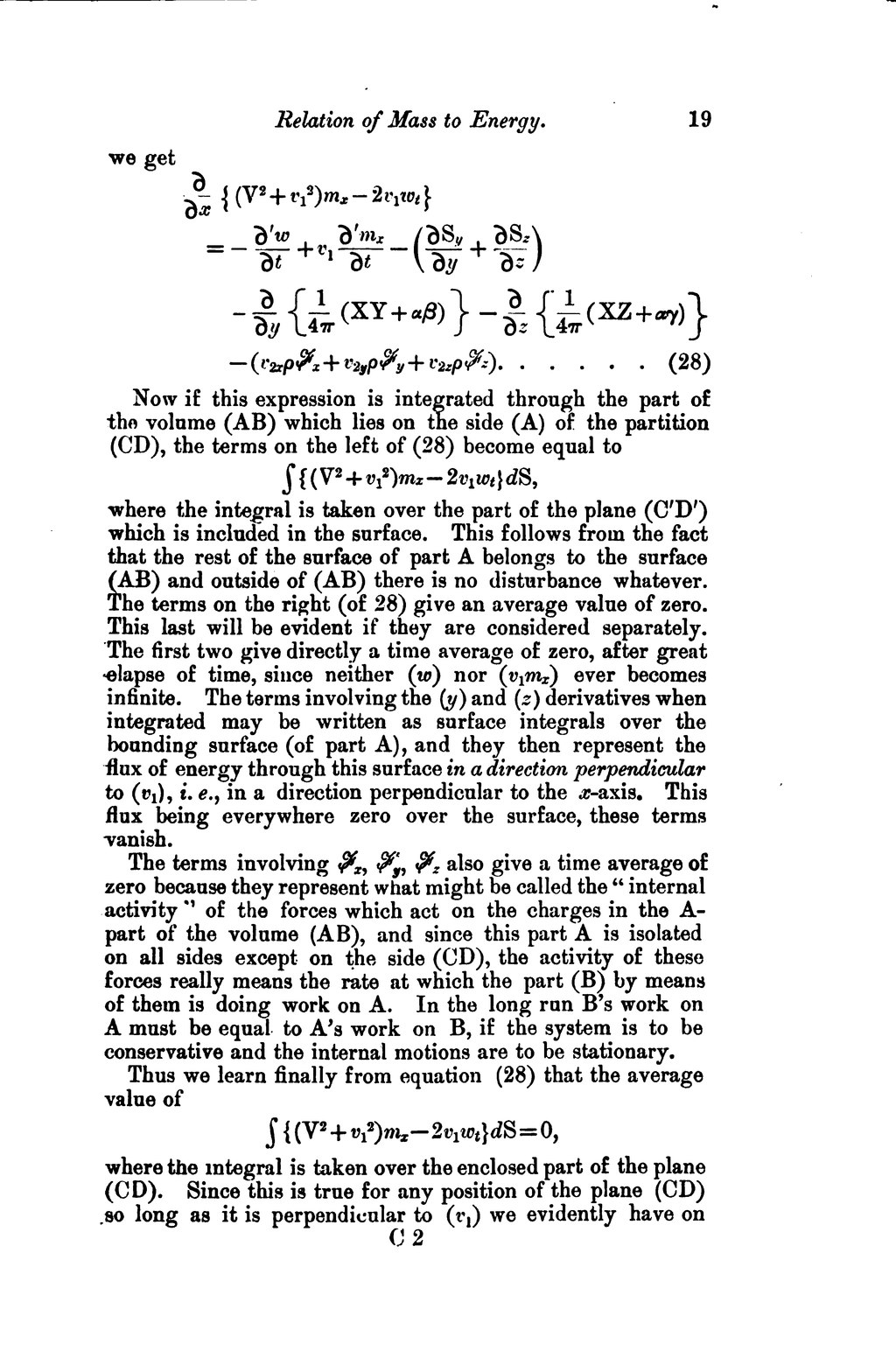we get
|
|
(28) |
Now if this expression is integrated through the part of the volume () which lies on the side () of the partition (), the terms on the left of (28) become equal to
,
where the integral is taken over the part of the plane () which is included in the surface. This follows from the fact that the rest of the surface of part belongs to the surface () and outside of () there is no disturbance whatever. The terms on the right (of 28) give an average value of zero. This last will be evident if they are considered separately. The first two give directly a time average of zero, after great elapse of time, since neither () nor () ever becomes infinite. The terms involving the () and () derivatives when integrated may be written as surface integrals over the bounding surface (of part ), and they then represent the flux of energy through this surface in a direction perpendicular to (), i. e., in a direction perpendicular to the -axis. This flux being everywhere zero over the surface, these terms vanish.
The terms involving also give a time average of zero because they represent what might be called the internal activity of the forces which act on the charges in the -part of the volume (), and since this part is isolated on all sides except on the side ( the activity of these forces really means the rate at which the part () by means of them is doing work on . In the long run 's work on must be equal to 's work on , if the system is to be conservative and the internal motions are to be stationary.
Thus we learn finally from equation (28) that the average value of
,
where the integral is taken over the enclosed part of the plane (). Since this is true for any position of the plane () so long as it is perpendicular to () we evidently have on



















